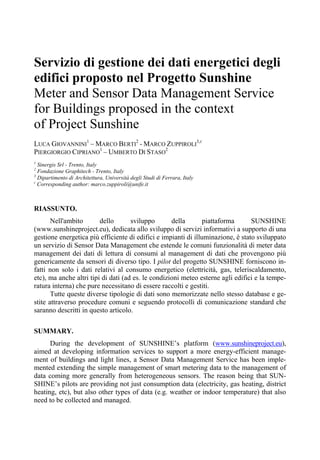During the development of the SUNSHINE platform for building energy management, a Sensor Data Management Service was implemented to collect, store, and analyze various sensor data from pilot buildings. The service extends beyond traditional meter data to also manage indoor temperature, weather, and other sensor readings. It ingests data from different sources via FTP, Green Button, and WFS protocols and stores it uniformly in a PostgreSQL/PostGIS database following the Sensor Observation Service standard. Analysis of energy use data from two schools in Ferrara, Italy identified weekly and seasonal consumption patterns related to outdoor temperature variations.









